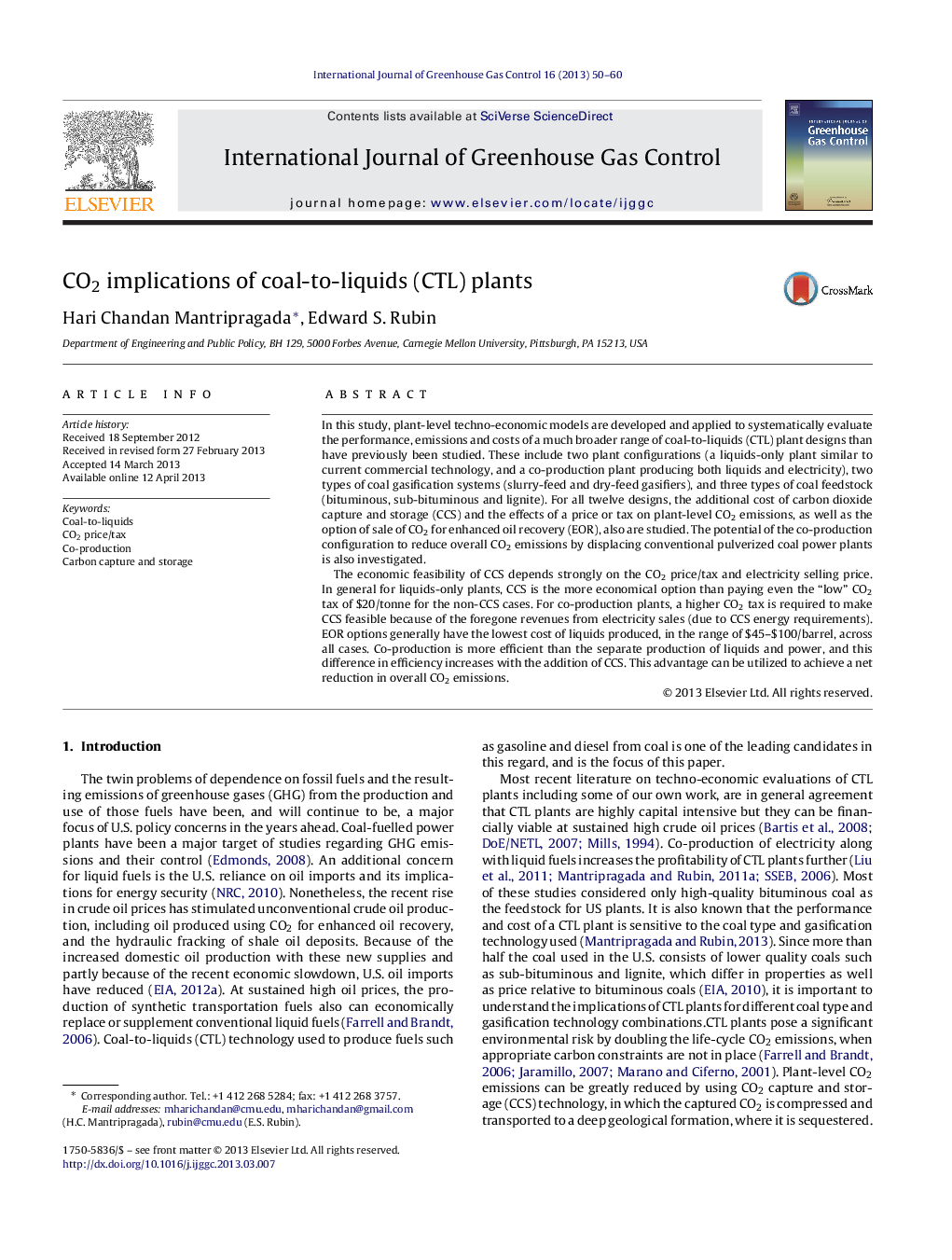| کد مقاله | کد نشریه | سال انتشار | مقاله انگلیسی | نسخه تمام متن |
|---|---|---|---|---|
| 1743225 | 1522005 | 2013 | 11 صفحه PDF | دانلود رایگان |

• Coal-to-liquids plants are modelled using comprehensive techno-economic models.
• Effects of CO2 capture and storage (CCS), CO2 for enhanced oil recovery (EOR) and plant-level CO2 tax are studied.
• Economic feasibility of CCS depends strongly on the CO2 price/tax and electricity selling price.
• EOR options generally have the lowest cost of liquids produced, in the range of $45–$100/barrel, across all cases.
• Net CO2 reduction possible with co-production of liquids and electricity with CCS.
In this study, plant-level techno-economic models are developed and applied to systematically evaluate the performance, emissions and costs of a much broader range of coal-to-liquids (CTL) plant designs than have previously been studied. These include two plant configurations (a liquids-only plant similar to current commercial technology, and a co-production plant producing both liquids and electricity), two types of coal gasification systems (slurry-feed and dry-feed gasifiers), and three types of coal feedstock (bituminous, sub-bituminous and lignite). For all twelve designs, the additional cost of carbon dioxide capture and storage (CCS) and the effects of a price or tax on plant-level CO2 emissions, as well as the option of sale of CO2 for enhanced oil recovery (EOR), also are studied. The potential of the co-production configuration to reduce overall CO2 emissions by displacing conventional pulverized coal power plants is also investigated.The economic feasibility of CCS depends strongly on the CO2 price/tax and electricity selling price. In general for liquids-only plants, CCS is the more economical option than paying even the “low” CO2 tax of $20/tonne for the non-CCS cases. For co-production plants, a higher CO2 tax is required to make CCS feasible because of the foregone revenues from electricity sales (due to CCS energy requirements). EOR options generally have the lowest cost of liquids produced, in the range of $45–$100/barrel, across all cases. Co-production is more efficient than the separate production of liquids and power, and this difference in efficiency increases with the addition of CCS. This advantage can be utilized to achieve a net reduction in overall CO2 emissions.
Journal: International Journal of Greenhouse Gas Control - Volume 16, August 2013, Pages 50–60